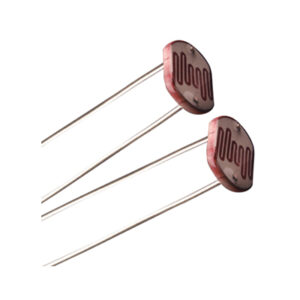One of the most elementary and easy-to-overlook circuit components is the switch. An electronic switch is an electronic component or device that can switch an electrical circuit, interrupting the current or diverting it from one conductor to another. The mechanism of a switch may be operated directly by a human operator to control a circuit (for example, a light switch or a keyboard button), may be operated by a moving object such as a door-operated switch, or may be operated by some sensing element for pressure, temperature or flow.
The most familiar form of switch is a manually operated electromechanical device with one or more sets of electrical contacts, which are connected to external circuits. Each set of contacts can be in one of two states: either “closed” meaning the contacts are touching and electricity can flow between them, or “open”, meaning the contacts are separated and the switch is non-conducting.
What is a Switch?
A switch is a component which controls the open-ness or closed-ness of an electric circuit. They allow control over current flow in a circuit.
A switch can only exist in one of two states: open or closed. In the off state, a switch looks like an open gap in the circuit. This, in effect, looks like an open circuit, preventing current from flowing.
In the on state, a switch acts just like a piece of perfectly-conducting wire. A short, this closes the circuit, turning the system “on” and allowing current to flow unimpeded through the rest of the system.
A circuit diagram with an LED, resistor, and a switch. When the switch is closed, current flows and the LED can illuminate. Otherwise no current flows, and the LED receives no power.
There are tons and tons of switches out there: toggle, rotary, DIP, push-button, rocker, membrane, the list just goes on and on. Each of those switch types has a set of unique characteristics to differentiate it from others. Characteristics like what action flips the switch, or how many circuits the switch can control.
There are different type of switches the below table shows the different type of switches which are available
| Electronics specification and abbreviation | Expansion of abbreviation |
British mains wiring name |
American electrical wiring name |
Description and symbol |
| SPST | Single pole, single throw | One-way | Two-way | A simple on-off switch: The two terminals are either connected together or disconnected from each other. An example is a light switch. |
| SPDT | Single pole, double throw | Two-way | Three-way | A simple changeover switch: C (COM, Common) is connected to L1 or to L2. |
| SPCO SPTT, c.o. |
Single pole changeover or Single pole, Centre off or Single Pole, Triple Throw |
Similar to SPDT. Some suppliers use SPCO/SPTT for switches with a stable off position in the Centre and SPDT for those without. |
||
| DPST | Double pole, single throw | Double pole | Double pole | Equivalent to two SPST switches controlled by a single mechanism |
| DPDT | Double pole, double throw | Equivalent to two SPDT switches controlled by a single mechanism. | ||
| DPCO | Double pole changeover or Double pole, Centre off |
Schematically equivalent to DPDT. Some suppliers use DPCO for switches with a stable center position and DPDT for those without. A DPDT/DPCO switch with a center position can be “off” in the center, not connected to either L1 or L2, or “on”, connected to both L1 and L2 at the same time. The positions of such switches are commonly referenced as “on-off-on” and “on-on-on” respectively. | ||
| Intermediate switch | Four-way switch | DPDT switch internally wired for polarity-reversal applications: only four rather than six wires are brought outside the switch housing. |
||
| 2P6T | Two pole, six throw | Changeover switch with a COM (Common), which can connect to L1, L2, L3, L4, L5, or L6; with a second switch (2P, two pole) controlled by a single mechanism |
How about controlling eight applications using an SPDT switch, yes! Tenet Technetronics introduces you the SPDT-V4 breakout board wherein the user can control 8 different applications at a time.
This breakout consists of 9 pins out of which 8 are output pins which are used to control any sort of applications and this breakout board can also be interfaced with the controller to read the input from the switch and to control any application using it. In the example below we are showing simple application where we are controlling 8 different LED’s using our breakout board. Here a single SPDT switch can control 2 applications if switch is moved to one part it turns on 1 LED glows and if it is moved to other side it turns ON the other LED.
- For more information please visit: tenettech.com
- For technical query please send an e-mail: info@tenettech.com









